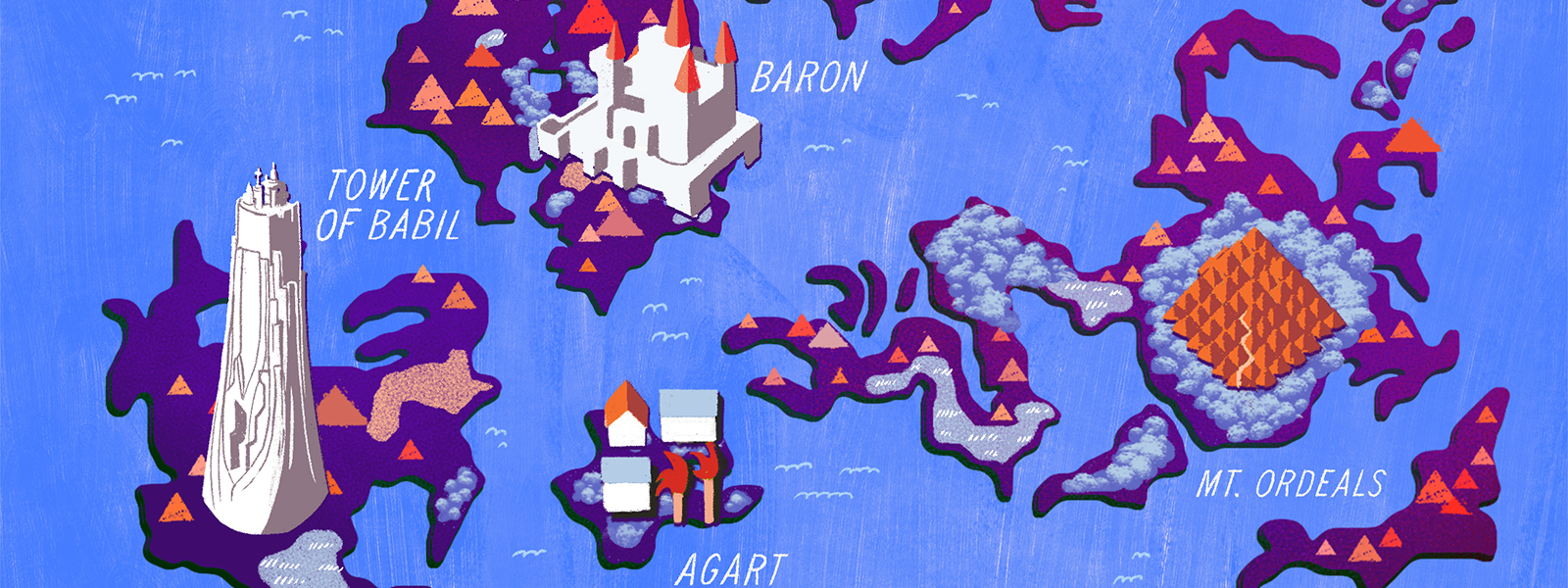Months after the release of Final Fantasy III, the next generation of consoles came to homes. The Super Nintendo Entertainment System had arrived. This means the next installment of the franchise would be a whopping 16-bits of action! We got Final Fantasy IV the same year as Japan: 1991. This was the first official sequel for the west. And this is where the confusing numbering of games begins. After Final Fantasy IV came out, Japan got a second version that same year. A simplified version removing some spells, abilities, and items. This was Final Fantasy IV Easy Type, and it was this game that got sent to the West as Final Fantasy II. I first played on a cart with a ruined battery which meant every time I powered off the console I had to start over. The furthest I ever got was the Tower of Zot. Now it is time to finish it finally, using Final Fantasy IV Advance on the Gameboy Advance.
And so, the dark knight Cecil was stripped of his command as the captain of the Red Wings. He and the master dragoon Kain head toward the dark valley for the village of Mist. The advent of the airship marked the realization of Baron’s dreams, but also the birth of its militarism. With its Royal Air Force Red Wings, Baron soon reigned supreme. Now, as monsters multiply and stir unrest, Baron only exploits its power to collect the world’s Crystals. Why? The Crystals silently shed their light…
A fourth game, fourth whole new system. No selected classes, no free-form character building, no job swapping. Instead, Final Fantasy IV focuses on the narrative. And with that comes narrative character design. Each character has a class that helps you understand their role in the party. Aside from equipment, there is little customization available. This is a stark turn since we’ve had plenty of it until now.
There is an exception to this (to a degree): the Advance version I played. In the earlier versions, the plot determined who was in your party and what was available to you. Later versions made an amendment to this for the end of the game. Through the power of retcon, you have access to all the party members and get to build your final party. This feature is a bit redundant by the lack of end-game support for some of the characters. At least not without extensive side-questing. This is something not necessary for the original final party.
Expectations
I had fond memories of replaying the beginning of this game so many times. Despite the repetition, I was always excited about it every time. This may be because chronologically speaking this was the first RPG I played. And I mean that in the sense of knowing what I was doing and progressing in the plot. Not just wandering around Corneria for hours on end. I did remember the plot being pretty compelling. The Paladin scene in particular was a favorite of mine.
Objectives
Aside from the main plot, Final Fantasy IV features a few optional dungeons. The original featured only the Lair of the Father which contained the summon Bahamut. This one isn’t very optional as Bahamut is a very powerful and useful summon. The Advance version introduces two dungeons: the Cave of Trials and the Lunar Ruins. The Cave of Trials is how they fixed the new party building in the end game. Inside a variety of bosses guard equipment for the new optional characters. These put them on par with the original end crew. Sadly the original team finds far superior weapons in the non-optional final dungeon. The final bonus dungeon, the Lunar Ruins, is a semi-random post-game dungeon with a super-boss at the end. Clearing all the floors and defeating Zeromus EG earns you the coveted… nothing. It gets you nothing. So we won’t be doing those two. Clearly.
Review
Final Fantasy IV lacks in some places but its plot indeed shines. It tells of a war started by one overreaching kingdom and the effects of its actions. The characters each have their own tale to tell. The fallen knight, the war orphan, the vengeful old man, and many others. And even when their tales overlap, they still retain their individuality. No one lumps into the main plot because of convenience. This is a big change from earlier entries where the party was just treated as a single character.
Despite the well-executed plot for an early entry in RPG history, there are some glaring flaws. This is one of the lowest points in the franchise for customization. There is very little that differentiates two different games. Unless one player grinds more than the other, there won’t be much difference. Usually, there is some kind of choice to make, but in Final Fantasy IV, those choices don’t exist.
The 3D edition of the game introduces Augments. Augments let you pass down commands and abilities to characters. The more you invest in temporary characters, the more you get back. But even this is minimal since getting the better options requires specific investments. It creates an illusion of choice.
Final Thoughts
I was happy to finish the game for the first time. It is a staple of RPG history and it should be appreciated at least once by everyone. But that said, in comparison to what I have played so far and what I know of is coming, it is lacking. And it shows. I’d recommend the 3D version over the 2D. It has a matching sequel and is cute as heck. Or just play Free Enterprise.
Final (Fantasy) Score: Four Crystals out of Eight


